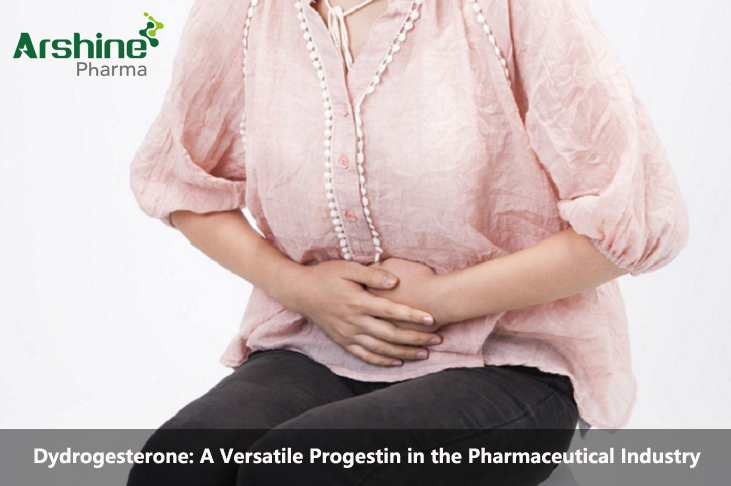
Introduction
Dydrogesterone, a synthetic progestin, has earned a prominent place in the pharmaceutical industry due to its versatile applications and clinical efficacy. As a derivative of progesterone, dydrogesterone serves as a valuable therapeutic option for various gynecological conditions and hormonal imbalances. This comprehensive analysis delves into the characteristics, mechanism of action, pharmacological profile, clinical applications, safety, and future prospects of dydrogesterone, highlighting its significance in women's health and beyond.
1. Characteristics of Dydrogesterone
Dydrogesterone, also known by its brand name Duphaston, is a synthetic progestin with a molecular formula C21H28O2. It is chemically derived from 17-alpha hydroxyprogesterone and possesses a unique structure, making it distinct from other synthetic progestins commonly used in the pharmaceutical industry. Its exceptional chemical characteristics contribute to its enhanced clinical profile and tolerability.
2. Mechanism of Action
Dydrogesterone exerts its therapeutic effects primarily through progesterone receptor binding and modulation. As a progestin, it mimics the actions of endogenous progesterone, binding to progesterone receptors in target tissues such as the endometrium, mammary glands, and reproductive organs. By doing so, dydrogesterone supports the secretory phase of the endometrium, preparing it for embryo implantation and maintaining pregnancy if conception occurs.
3. Pharmacological Profile
3.1 Pharmacokinetics
Dydrogesterone is predominantly administered orally, and it undergoes rapid and complete absorption from the gastrointestinal tract. The drug's bioavailability is high, and its metabolism occurs primarily in the liver through various enzymatic pathways. Notably, dydrogesterone undergoes minimal hepatic first-pass metabolism, which contributes to its enhanced bioavailability and steady plasma levels.
3.2 Pharmacodynamics
As a progestin, dydrogesterone exhibits a wide range of pharmacological actions, including the regulation of the menstrual cycle, support of early pregnancy, and hormone replacement therapy in menopausal women. It is structurally different from 19-nortestosterone derivatives, such as norethisterone and levonorgestrel, which reduces the likelihood of androgenic and estrogenic side effects commonly associated with these compounds.
4. Clinical Applications
4.1 Menstrual Disorders
Dydrogesterone plays a pivotal role in managing various menstrual disorders, such as irregular cycles, dysfunctional uterine bleeding, and premenstrual syndrome (PMS). By regulating the endometrial lining, dydrogesterone helps establish a predictable menstrual cycle and reduces excessive or erratic bleeding patterns. Its ability to stabilize the endometrium is particularly beneficial in women with inadequate luteal phase support or those with a history of recurrent miscarriages.
4.2 Assisted Reproduction
In the realm of assisted reproduction, dydrogesterone is frequently used in conjunction with infertility treatments, including in vitro fertilization (IVF) and intrauterine insemination (IUI). Its role in preparing the endometrium for embryo implantation and supporting early pregnancy has been instrumental in improving pregnancy rates and enhancing the success of assisted reproductive techniques.
4.3 Hormone Replacement Therapy (HRT)
During menopause, women often experience hormonal imbalances and unpleasant symptoms such as hot flashes, mood swings, and vaginal dryness. Dydrogesterone, as a progestin component of hormone replacement therapy, complements estrogen supplementation by protecting the endometrium from estrogen-induced hyperplasia. The combination of estrogen and dydrogesterone in HRT offers relief from menopausal symptoms and reduces the risk of endometrial cancer.
4.4 Endometriosis
Endometriosis is a painful gynecological condition characterized by the presence of endometrial tissue outside the uterus. Dydrogesterone has shown efficacy in managing endometriosis-related symptoms, such as pelvic pain and dysmenorrhea. By providing a favorable hormonal environment, dydrogesterone helps to control the growth and shedding of ectopic endometrial tissue, providing relief to affected women.
5. Safety
Dydrogesterone is generally well-tolerated, with a favorable safety profile compared to other synthetic progestins. Its unique structure minimizes the occurrence of androgenic side effects, making it suitable for women who may be sensitive to hormonal therapies. However, like any medication, dydrogesterone may cause some adverse effects, including nausea, headache, breast tenderness, and minor gastrointestinal disturbances. These side effects are usually transient and resolve with continued use or dose adjustments.
6. Future Prospects
The future prospects of dydrogesterone in the pharmaceutical industry remain promising. Ongoing research continues to explore its potential applications in various gynecological and non-gynecological conditions. Additionally, efforts are being made to develop innovative formulations and delivery methods to improve patient convenience and compliance.
Conclusion
Dydrogesterone, a synthetic progestin, stands as a valuable therapeutic option in the pharmaceutical industry, catering to the specific needs of women's health. Its unique characteristics, mechanism of action, and pharmacological profile have positioned it as a versatile agent for managing menstrual disorders, supporting assisted reproduction, providing hormone replacement therapy, and addressing endometriosis-related symptoms. With a favorable safety profile and ongoing research, dydrogesterone's future in the pharmaceutical landscape looks promising, reinforcing its essential role in optimizing women's health and wellbeing. As the understanding of hormonal therapies advances, dydrogesterone is likely to continue its impact on patient care and the field of women's health as a whole.
